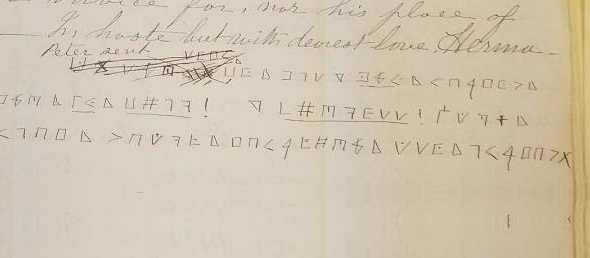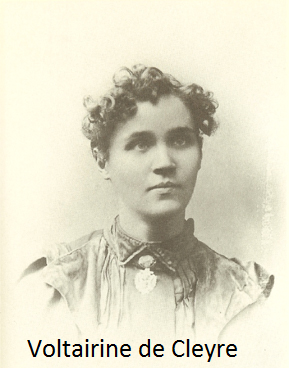A PhD student has come across an encrypted message written by a 19th century anarchist. Can a reader break this encryption?
“I’m a historian; found this coded message in an 1893 letter. Help?”
These words stem from a post recently published on Reddit. Thanks to David Allen Wilson for informing me about it. Here’s the coded message (I would rather call it encrypted) in question:
The author of the Reddit inquiry writes: “I am a PhD student in history writing my dissertation on anarchism in the US during the late-nineteenth century. This letter was from Mary Herma Aikin to Voltairine de Cleyre in June, 1893. I think the cipher is in English, but there’s also a chance it’s in French. At the beginning of the letter, Aikin said that she believed their communications were being monitored/censored by the US Postal Service, hence the need for a code. The rest of the letter discusses an ill-advised plan their friend ‘P’ is hatching.”
Voltairine de Cleyre (1866-1912), the recipient of the message, was an American anarchist, known for being a prolific writer and speaker, and opposing capitalism, the state, marriage, and the domination of religion over sexuality and women’s lives. I have found no information about the sender, Mary Herma Aikin.
As can be seen, the alphabet used by Aikin contains a number of symbols known from the Pigpen cipher. The following picture, which has got nothing to do with the cryptogram shown above, shows a few Pigpen examples:
Just like the Pigpen cipher, the encryption method used by Mary Herma Aikin is probably a MASC (monoalphabetic substitution cipher), i.e., a simple letter substitution. If so, it should be possible to solve it – even if the message is quite short.
According to the Reddit poster, the paragraph before the cryptogram reads as follows: “I lost last year $15.00, as absolutely as if it was sunk in the sea, through exactly such a plan as he proposed. I will get my regular attorney, who tried to save my money for me, to write out a legal opinion of the case, booked by advice to let it alone and I will send that to P. Of course I shall give no clue as to whom I want the opinion and advice for, nor his place of residence. In haste but with dearest love, Herma.”
Can a reader break this encryption?
Follow @KlausSchmeh
Further reading: Who can decipher this encrypted text in a Linkin Park video?
Linkedin: https://www.linkedin.com/groups/13501820
Facebook: https://www.facebook.com/groups/763282653806483/






Kommentare (20)